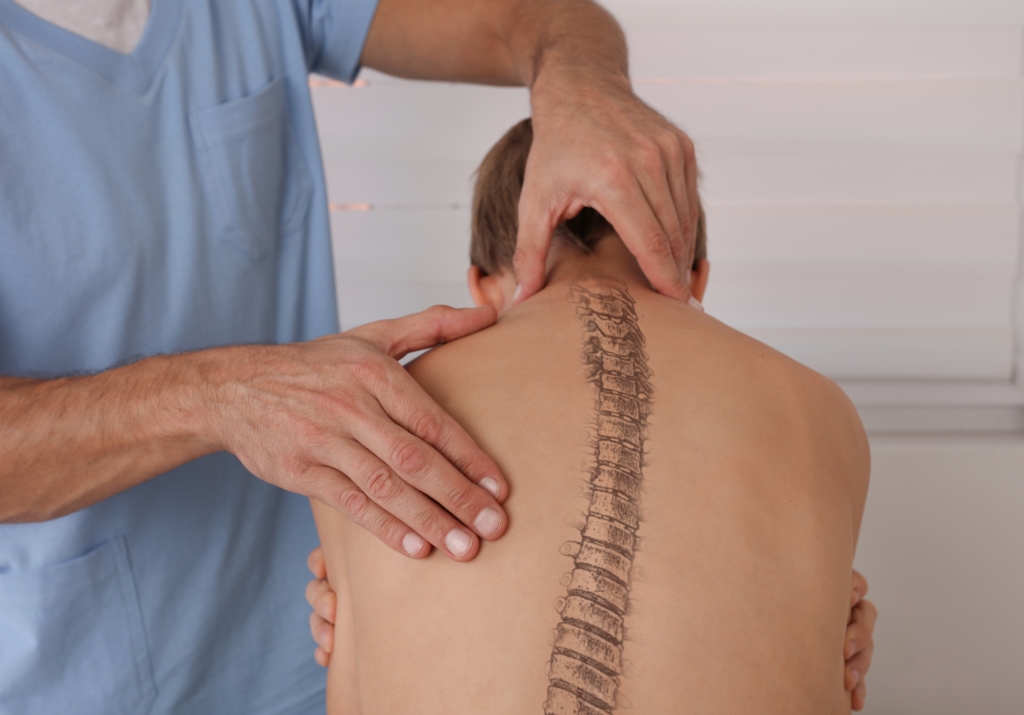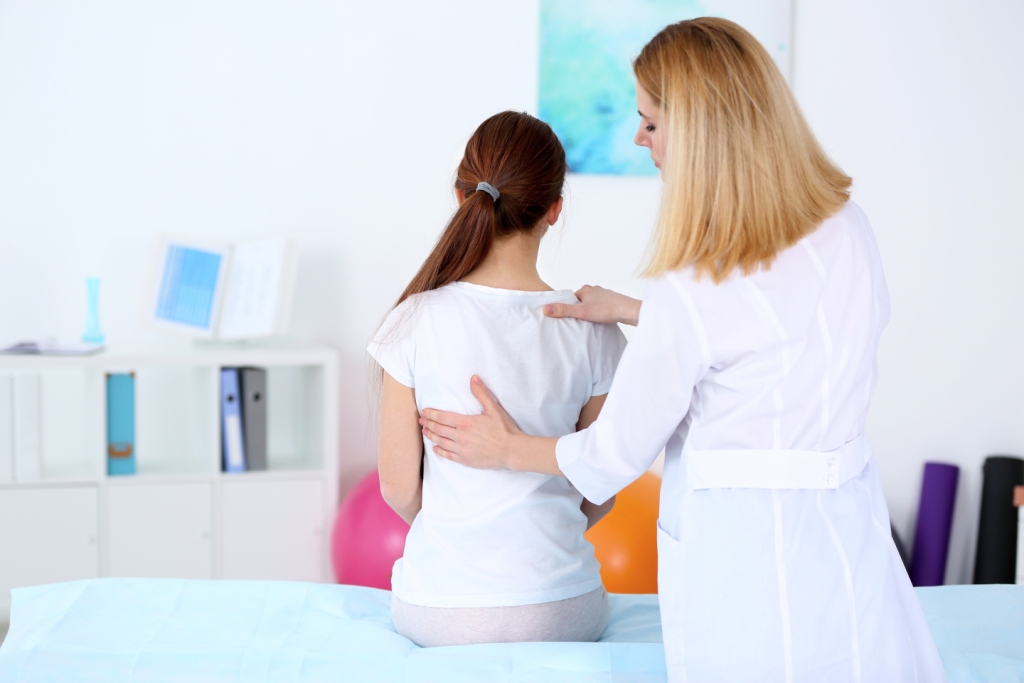The twist or rotation of the spine also known as Scoliosis, can affect anyone, including the young.
The thought of your child having scoliosis can feel nerve-wrecking but being equipped with proper knowledge and knowing how to identify it at any early age, can make a huge difference.
Founder and senior consultant of Chiropractic First Spine and Nerve Clinic Dr. Matt Kann, shares all about Scoliosis among children.

1Twenty80: What is the difference between idiopathic scoliosis with other types of scoliosis?
Dr. Matt Kan: Scoliosis is usually first seen in children and adolescents between the age of 8 to 18. In children, it can be a more serious complication because it can rapidly progress especially during growth spurts. Scoliosis is a progressive, lateral curvature of the spine. When viewed from the back the spine is curved from side to side or in an ‘S’ or ‘C’ shape while a normal spine should be running straight down the middle.
There are three different types of scoliosis that are mainly associated with children – congenital, neuromuscular, and idiopathic. Congenital scoliosis is an abnormal curvature of the spine that commonly results from a spinal defect at birth. Neuromuscular forms of scoliosis, on the other hand, are usually associated with certain disorders of the nerve or muscular systems, such as spinal cord injury, spina bifida, muscular dystrophy or cerebral palsy.
While there are known causes for congenital and neuromuscular scoliosis, there is currently no single definite cause for idiopathic scoliosis. Idiopathic scoliosis is the most common type of scoliosis and it is typically present during adolescence, although it can also develop earlier in childhood or even develop later in adults.
Like tooth decay and cancer, scoliosis and subluxations may go unnoticed before any warning signs appear. Results of a thorough examination can show the location and severity of scoliosis and any subluxations that the child may have.
1Twenty80: How common is scoliosis in children?
Dr. Matt: Scoliosis is common among school-aged children. Children in Malaysia and Singapore have a much higher occurrence compared to children in the United Kingdom (UK).

1Twenty80: At what age can scoliosis in children be diagnosed?
Dr. Matt: Scoliosis can affect people of any age. A child may be born with scoliosis or may develop it later in life. The majority of children can be diagnosed with idiopathic scoliosis during their growth spurt, right before puberty. Idiopathic scoliosis in children are typically categorised by age at the onset of diagnosis:
- Infantile idiopathic scoliosis: From 0 to 3 years old
- Juvenile idiopathic scoliosis: From 4 to 9 years old
- Adolescent idiopathic scoliosis: From 10 to 17 years old
Scoliosis is common among school-aged children. Children in Malaysia and Singapore have a much higher occurrence compared to children in the UK.
1Twenty80: What causes scoliosis in children?
Dr. Matt: Certain forms of scoliosis have a direct-known cause such as neurological and congenital type. However, over 80 percent of scoliosis cases diagnosed are idiopathic, meaning, there is no known cause or that the cause is not readily apparent. When there is a pre-existing condition like spinal misalignment or pelvic rotated and strained/unnatural loading like heavy school bags, it will result in rapid progression of the curve, especially during the child’s growth spurts. Scoliosis and curvature will develop rapidly. Pre-existing conditions can be caused by injuries of the spline like slips and falls, trauma at birth and poor postural habits.
1Twenty80: How to diagnose scoliosis in children?
Dr. Matt: Early diagnosis of scoliosis is vital to prevent the worsening of the spinal curvature and to minimise the long-term impact that it may have on your child’s health. In our clinic, after a detailed medical and family history is gone through, we may use the following physical tests to detect any abnormality in the spine’s curvature:
- Spine palpation
- Scoliometer
- Range of motion
- Leg length and gait test
- Adam’s forward bend test
If necessary and fitting to the child, we might also order for an x-ray imaging to take a closer look at the spine and to precisely measure the angles of curvature.
1Twenty80: To what degree of the curve in a child’s spine is considered to be scoliosis?
Dr. Matt: Scoliosis is defined as a lateral spinal curvature of 10° or greater, assessed using the Cobb method. The degree of curvature is classified as below:
- Less than 20°: mild curve
- Between 20° and 40°: moderate curve
- More than 40°: severe curve
1Twenty80: Can scoliosis heal by itself?
Dr. Matt: Unfortunately, scoliosis does not resolve on its own. In fact, if left unnoticed and untreated, the abnormal curvature can progress and get worse to a point where it can be potentially life-threatening. Severe cases of scoliosis can constrict the chest cavity and eventually causing difficulties in breathing or even damaging the lungs or heart.
1Twenty80: How does scoliosis affect children’s development?
Dr. Matt: Most idiopathic scoliosis develops during adolescence and if your child has scoliosis, it can worsen quickly during a growth spurt. Scoliosis, although defined as a curvature in the spine, is a more complex, three-dimensional deformity in the spine. The irregular twisting and rotation of the spine can cause abnormal growth in the thoracic spine and often leads to decreased lung volumes if left untreated. This can cause pain, difficulty in breathing, aesthetic deformities as well as psychological distress in a growing child.

The only prevention is early check to ensure proper alignment of the spine and intervene with natural chiropractic care.
1Twenty80: Is it possible to prevent scoliosis in children?
Dr. Matt: The only prevention is early check to ensure proper alignment of the spine and intervene with natural chiropractic care. Early checks and interventions to immediately resolve spine misalignment and posture problems must be done before the child’s growth spurts.

Parents and caretakers play an important role in the early detection of scoliosis, so some of the ‘home checks’ they can perform include:
- Uneven shoulders
- Uneven waist
- Elevated hip
- Prominent or bulging shoulder blade
- Constant leaning to one side
- Changes in gait/ how they walk
If you notice any of the signs above in your child, seek a chiropractor to have your child’s spine examined.











